The Ultimate Kailash Sacred Mountain Trek: Tips and Insights
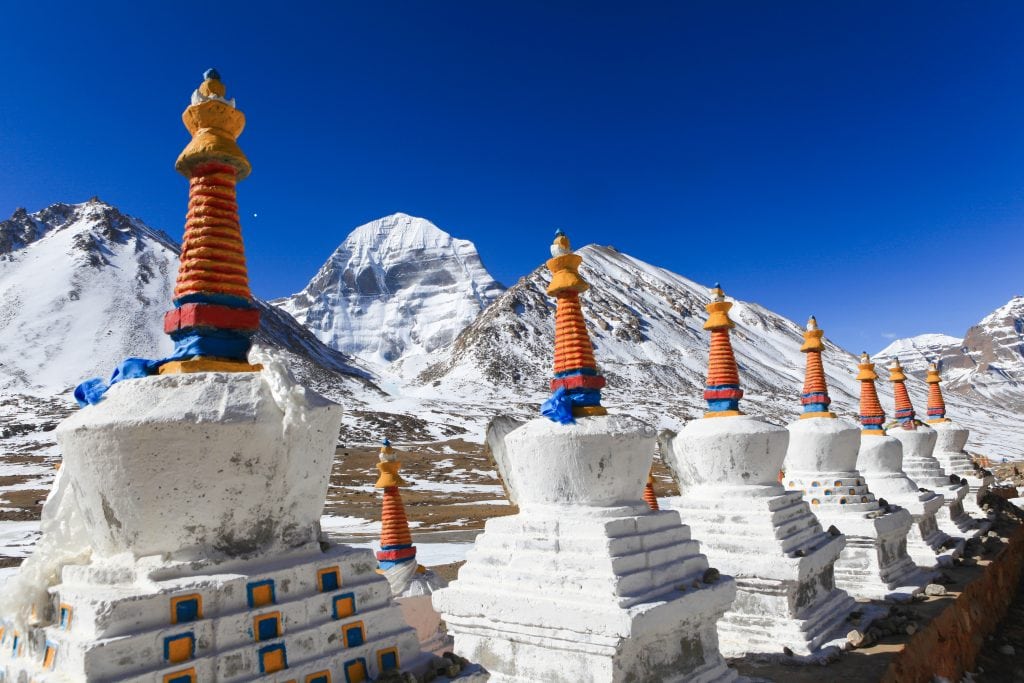
An Essential Guide to Visiting Kailash Sacred Mountain
Nestled in the remote landscapes of Tibet, Mount Kailash stands as a majestic sentinel, revered by millions across the globe. This sacred peak, reaching an elevation of 6,638 meters, is not just a natural wonder—it is the spiritual heart of four major religions: Hinduism, Buddhism, Jainism, and Bon. For many, the journey to Kailash is more than a mere trek; it is a profound pilgrimage that intertwines personal quests for enlightenment with communal celebrations of faith.
As you embark on this adventure, prepare to be captivated by the stunning panoramas that unfold around you, from the pristine waters of Lake Manasarovar to the rugged terrains that cradle the mountain itself. The air is imbued with a sense of serenity, where each step along the famed kora (the circumambulation route) draws you closer to the essence of spirituality that envelops this enigmatic landscape.
In this essential guide, we’ll explore everything you need to know to make your visit to Kailash an unforgettable experience. From vital preparation tips and the best times to go, to insights on local culture and the necessary permits—everything is designed to help you navigate this sacred journey with ease and reverence. Whether you seek the thrill of adventure, the peace of spiritual reflection, or simply the beauty of nature, Kailash beckons with an allure that promises to resonate long after your visit.
In This Guide
- An Essential Guide to Visiting Kailash Sacred Mountain
- The Rich History and Legends of Kailash Sacred Mountain
- Main Highlights: What You Absolutely Can’t Miss
- Planning Your Visit: A Practical Guide
- Tickets: Prices, Booking, and Tips
- How to Get There: A Complete Transportation Guide
- Local Cuisine and Accommodation Nearby
- Frequently Asked Questions
- Final Thoughts on Your Trip
The Rich History and Legends of Kailash Sacred Mountain
Mount Kailash, known as Gang Rinpoche in Tibetan, is not just a mountain; it is a revered sacred site steeped in rich history and legend that draws pilgrims and travelers from across the globe. Standing at an imposing 6,638 meters, it rises majestically above the Tibetan plateau, captivating the hearts and minds of those who come to witness its beauty and spiritual significance.
According to ancient texts, Kailash is believed to be the abode of Lord Shiva, one of the principal deities in Hinduism, who is said to reside at the top of the peak, meditating in eternal bliss. For Hindus, the mountain represents the center of the universe, a cosmic axis connecting heaven and earth. This divine connection is echoed in the epic tales of the Ramayana and the Mahabharata, where Kailash is frequently mentioned as a place of power and spirituality.
In addition to its significance in Hinduism, Mount Kailash holds a sacred place in Buddhism, Jainism, and Bon, the indigenous religion of Tibet. Buddhists regard Kailash as the home of Demchok, a deity symbolizing supreme bliss, while Jains believe it to be the site where their first Tirthankara, Rishabhadeva, achieved liberation. The Bon tradition reveres the mountain as a sacred site where the founding figures of Bon meditated, further intertwining the mountain’s legacy with the spiritual fabric of the region.
The legends surrounding Kailash are as captivating as its physical presence. One popular tale speaks of the celestial origin of the mountain, claiming it was formed from the bones of a mythical giant who was punished by the gods. This narrative highlights the deep-rooted connections between the mountain and the cosmos, emphasizing its role as a bridge between the earthly and the divine.
The annual Saga Dawa festival adds vibrancy to Kailash’s spiritual landscape, celebrating the birth, enlightenment, and death of Buddha Shakyamuni. During this time, thousands of pilgrims don their finest garments, transforming the area into a tapestry of colorful traditional attire, united in their devotion and reverence for the mountain.
Pilgrimages to Kailash, known as kora in Tibetan, are a rite of passage for many, requiring not only physical endurance but also a deep spiritual commitment. The three-day trek around the mountain is seen as a purification process, where pilgrims walk the sacred path to cleanse themselves of sins and attain spiritual merit. The act of circling the mountain is believed to bring about profound blessings and a deeper connection to the divine.
The historical significance of Kailash has also been recognized in more recent times. In the 20th century, it became a focal point for explorers and spiritual seekers alike, drawing attention not only for its beauty but also for the mystery that shrouds it. The mountain’s remoteness and the difficulty of access have added to its allure, making it a coveted destination for those seeking adventure infused with spirituality.
Today, Mount Kailash stands not only as a natural marvel but also as a symbol of unity among diverse cultures and religions. Its rich tapestry of history and legends continues to inspire awe and reverence, inviting travelers to embark on a journey that transcends the physical realm and touches the spirit. Whether you are drawn by faith, culture, or the breathtaking landscapes, Kailash offers a profound experience that lingers long after the trek concludes.
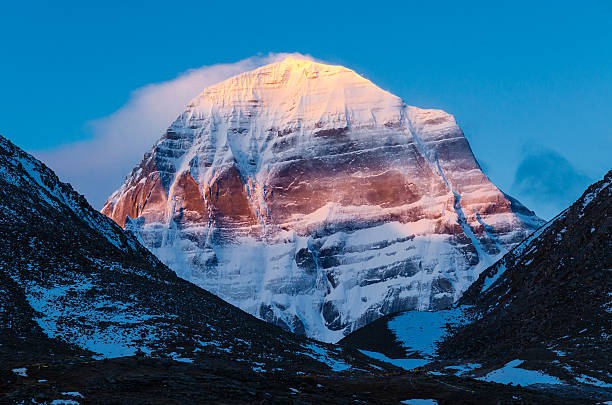
Kailash Sacred Mountain.
Main Highlights: What You Absolutely Can’t Miss
Mount Kailash, a revered site for millions across various religious traditions, is not just a mountain; it is a pilgrimage steeped in spirituality, breathtaking landscapes, and rich cultural experiences. Here’s a detailed guide to the main highlights you absolutely can’t miss when visiting this sacred mountain.
The Kora Trek
Embarking on the Kora, or circumambulation, around Mount Kailash is a spiritual journey that takes approximately three days. This trek is a transformative experience, allowing you to walk in the footsteps of devout pilgrims from around the world. The route offers stunning views of the mountain and the surrounding high-altitude landscape, making it a must for any adventurous traveler.
Manasarovar Lake
Just a stone’s throw away from Mount Kailash lies the holy Manasarovar Lake, one of the highest freshwater lakes in the world. Revered in Hindu and Buddhist traditions, it is believed that bathing in its sacred waters can cleanse you of sins and facilitate enlightenment. The serene beauty of the lake, with its crystal-clear waters reflecting the towering peaks, is a sight that will remain etched in your memory.
Saga Dawa Festival
If you’re fortunate enough to visit during the Saga Dawa Festival, which celebrates the birth, enlightenment, and nirvana of Buddha, you’ll witness an extraordinary cultural spectacle. This event, held annually in May or June, draws pilgrims adorned in vibrant traditional attire, creating a kaleidoscope of colors against the backdrop of the majestic mountain. The atmosphere is filled with devotion, music, and communal celebration.
Ancient Monasteries
The journey to Mount Kailash is dotted with ancient monasteries that provide insight into the region’s deep-rooted spirituality. Notable sites include Darchen Monastery, which serves as a base for many pilgrims, and Tarboche Monastery, where the ceremonial raising of prayer flags occurs. These monasteries are not only architectural marvels but also places of reflection and understanding of Tibetan Buddhism’s teachings.
Scenic Views Along the Route
The route to Mount Kailash offers some of the most breathtaking landscapes you will ever encounter. From the rugged terrain of the Tibetan Plateau to the stunning vistas of Yamdrok Lake, every turn presents an opportunity for awe and inspiration. Don’t forget your camera; the dramatic scenery is simply too beautiful to miss.
Acclimatization Opportunities
The journey to Kailash is as much about the experience as it is about the destination. Allow yourself time to acclimatize to the high altitude before starting the trek. This ensures not only your safety but also enhances your appreciation of the stunning surroundings. Embrace the slow pace of life in the villages you pass through, and take the time to connect with the local culture and traditions.
Cultural Encounters
Traveling through the Kailash region offers countless chances to engage with the local Tibetan community. From tasting authentic Tibetan cuisine to participating in traditional festivals, these experiences enrich your journey. Engage with local guides, who are not only knowledgeable but also passionate about sharing their culture and history with visitors.
The Spiritual Vibe
Ultimately, what sets Mount Kailash apart is its spiritual significance. Whether you are a pilgrim seeking enlightenment or a traveler in search of adventure, the energy of this sacred mountain is palpable. Take a moment to sit quietly and reflect, allowing the tranquility of your surroundings to wash over you.
Visiting Mount Kailash is more than just a trek; it is a profound journey into the heart of Tibetan spirituality and culture. Each of these highlights offers a unique glimpse into the essence of this magnificent region, making it an unforgettable experience for international travelers.
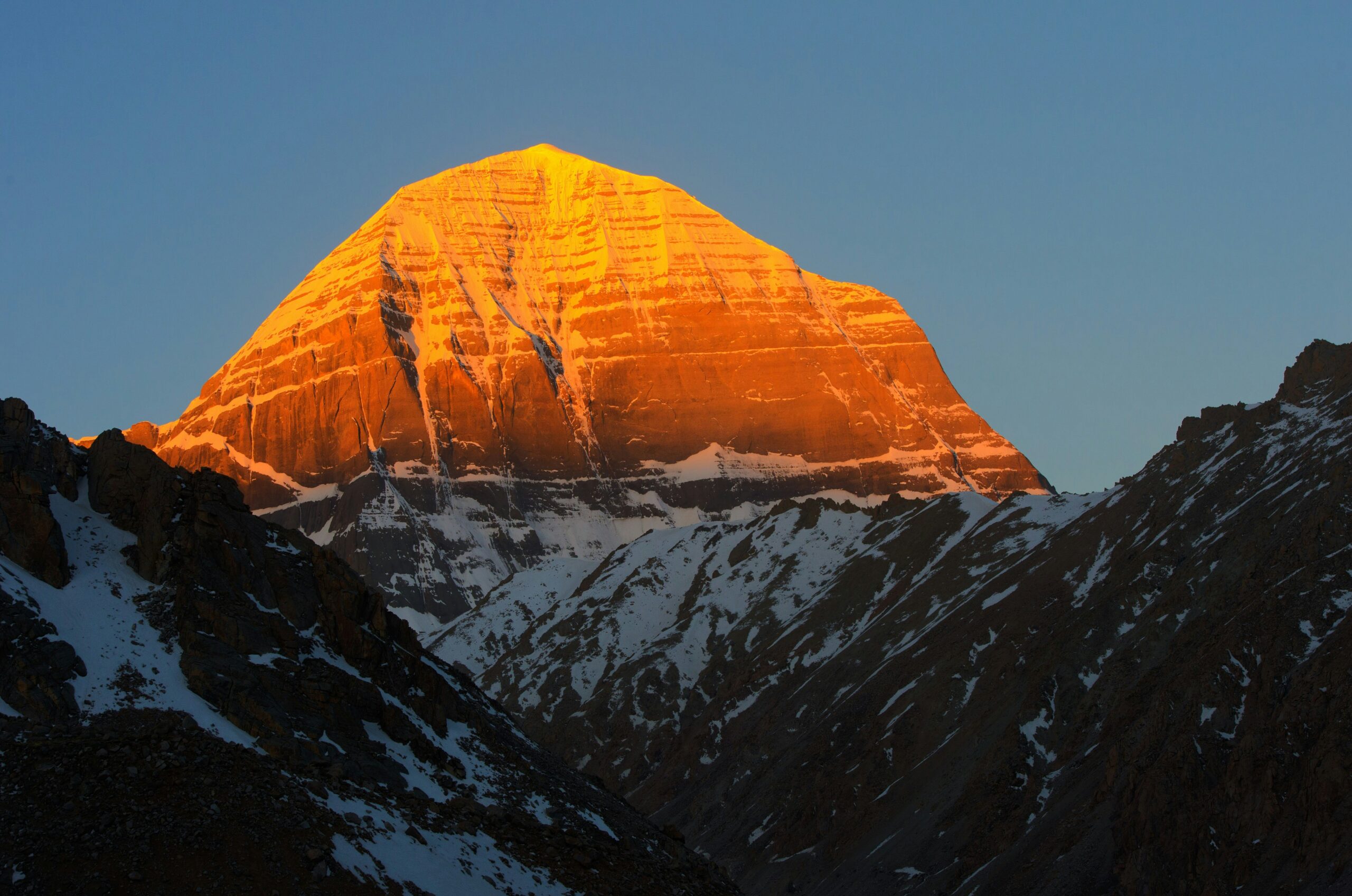
Kailash Sacred Mountain.
Planning Your Visit: A Practical Guide
Visiting Mount Kailash, known as the sacred abode of the gods, is a journey that transcends mere travel; it is a spiritual pilgrimage that draws thousands of devotees from around the world. To ensure that your experience is as enriching and seamless as possible, careful planning is essential. This guide will cover everything you need to know before you embark on this once-in-a-lifetime adventure.
Preparing for Your Journey
Required Documents
Before you set off, ensure you have the following documents:
- Valid Passport: Your passport must not expire for at least six months after your trip and should contain at least one blank page.
- Chinese Visa: Most travelers require a standard Chinese visa. However, if you’re arriving from Nepal, you will need a special Chinese group visa, which is obtained through a local agency.
- Tibet Travel Permit: This essential permit, along with other necessary documents for the Kailash region, will be arranged by your Tibetan travel agency.
When to Visit
The ideal window for visiting Mount Kailash is from April to mid-October. The peak months are May and September, when the weather is relatively mild and the mountain views are unobstructed. Be mindful that July and August may bring rain, although it tends to be more manageable in the daytime.
If you’re interested in experiencing local culture, consider timing your visit during the Saga Dawa Festival, which typically falls between mid-May and early June. This event celebrates the life of Buddha and attracts pilgrims adorned in traditional attire.
How to Get There
Reaching Mount Kailash can be accomplished via several routes:
- From Lhasa: The most common approach is to drive from Lhasa to Darchen, the base for the trek. This journey usually takes about three days and allows for acclimatization.
- From Ali (Western Tibet): You can fly into Ali and then drive to Darchen. However, due to the high altitude in Ali, it is recommended to acclimatize beforehand.
- From Nepal: You may drive to the border town of Gyirong or Hilsa, then continue to Kailash. Recent developments also include direct flights from Nepalgunj to see the mountain.
- From India: Indian passport holders may access Kailash via the Tibet-India border.
Each travel option has its pros and cons, primarily revolving around cost and the opportunity for acclimatization, so choose the one that best suits your needs.
Physical Preparation
The trek around Mount Kailash, known as the kora, is a physically demanding journey that spans three days. Prior to your visit, it is advisable to engage in physical training to build your stamina. Hiking, walking, and cardiovascular exercises are beneficial for preparing your body for the high-altitude trek.
Health Considerations
Given the altitude, it’s crucial to be aware of altitude sickness symptoms. Consult a healthcare professional before your trip, and carry necessary medications. Ensure you stay hydrated and listen to your body during the trek.
Packing Essentials
When packing for your adventure, consider the following:
- Clothing: Layered clothing is best due to fluctuating temperatures. Include thermal undergarments, a warm jacket, and breathable hiking gear.
- Footwear: Sturdy, comfortable hiking boots are a must.
- Gear: A quality backpack, trekking poles, sunglasses, and a reusable water bottle will enhance your experience.
- Personal Items: Sunscreen, lip balm, and a basic first aid kit are essential.
- Food: Although food options are available along the trek, consider packing high-energy snacks like nuts and energy bars.
Accommodations and Food
Accommodation options near Kailash range from guesthouses to camping. In Darchen, basic guesthouses often provide meals, but dining options may be limited, so it’s wise to inquire ahead about food availability. Additionally, consider bringing snacks for the trek, as meals may be sparse along the route.
Hiring Assistance
For those looking to ease the burden of carrying heavy loads, hiring a porter, yak, or horse can be a great option. This not only lightens your load but also supports local livelihoods.
Final Tips
- Plan Ahead: Book your trip at least a month in advance, especially if you are traveling during peak seasons or around the Saga Dawa Festival.
- Stay Flexible: Be prepared for changes in travel plans, especially due to weather or permit issues.
- Respect the Culture: As a sacred site, it’s essential to approach Kailash with reverence and respect for local customs and traditions.
Embarking on a journey to Mount Kailash is not just about reaching the destination; it’s about embracing the experience, the culture, and the spiritual significance of this majestic mountain. Happy travels!
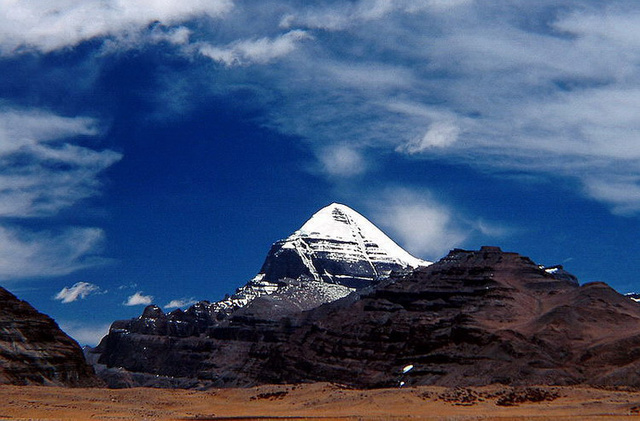
Kailash Sacred Mountain.
Tickets: Prices, Booking, and Tips
Planning a visit to Kailash Sacred Mountain requires careful consideration of several factors, including ticket prices, booking procedures, and useful tips to enhance your experience. Below, we break down the essential information you need to navigate this profound journey.
Ticket Prices
The cost of visiting Mount Kailash varies based on the type of tour you choose and the inclusions. Here’s a general breakdown:
-
Group Tours: These typically range from USD 1,000 to USD 1,500 per person for a 15-day itinerary that includes transportation, accommodation, meals, and guided tours. Group tours can significantly reduce costs as expenses are shared among travelers.
-
Private Tours: Prices for private tours can start at around USD 1,500 and can go upwards of USD 2,500, depending on the level of luxury, customization, and additional services provided.
-
Additional Costs: Keep in mind that you may also need to budget for optional services such as hiring yaks or porters for your trek, which can cost around USD 50 to USD 100 per day.
Booking Procedures
To ensure a smooth trip, booking your tour well in advance is crucial, particularly because of the necessary permits required for travel to Tibet. Here’s how to navigate the booking process:
-
Choose a Licensed Travel Agency: It’s essential to book through a reputable travel agency that specializes in Tibetan tours. They will handle all necessary permits and logistics.
-
Advance Planning: Aim to book your tour at least one month ahead of your travel date. This allows ample time for permit processing, which is usually completed within two weeks.
-
Permits: Ensure that your travel agency arranges for the necessary permits, including the Tibet Travel Permit and any additional permits for the Kailash region. These are mandatory for all foreign travelers.
-
Documentation: Have your valid passport and Chinese visa ready, as these are required at the time of booking. If traveling from Nepal, you will need a Chinese group visa.
Tips for Travelers
-
Acclimatization: Given the high altitude of Mount Kailash (over 6,600 meters), it’s essential to acclimatize properly. Consider spending a few days in Lhasa or other lower-altitude areas before embarking on the trek.
-
Travel Insurance: Invest in comprehensive travel insurance that covers high-altitude trekking and any unexpected medical needs.
-
Best Time to Visit: The ideal months for trekking around Mount Kailash are from April to mid-October, with May and September offering the best weather for clear views and photography.
-
Cultural Sensitivity: As a sacred site for multiple religions, be respectful of local customs and practices. Dressing modestly and refraining from loud noises during the trek is advisable.
-
Prepare for Physical Challenge: The trek around Kailash is demanding, so physical preparation is vital. Engage in regular cardio and strength training ahead of your journey to enhance your endurance.
By following these guidelines, you’ll set yourself up for an unforgettable pilgrimage to Kailash Sacred Mountain, where breathtaking landscapes and rich spiritual heritage await. Enjoy your adventure!
How to Get There: A Complete Transportation Guide
Reaching the majestic Mount Kailash, revered in Hinduism, Buddhism, Jainism, and Bon, is an adventure that blends spiritual significance with breathtaking landscapes. Whether you’re embarking on a pilgrimage or simply seeking the thrill of high-altitude trekking, understanding the various transportation options is crucial for a seamless journey. Below is your comprehensive guide to getting to Kailash Sacred Mountain.
1. Traveling from Lhasa, Tibet
Driving from Lhasa:
The most popular route for travelers is to drive from Lhasa to Mount Kailash. This journey typically takes 3 to 5 days, depending on your itinerary and whether you want to include stops at other notable sites like Mount Everest and Manasarovar Lake. The drive is scenic, allowing you to gradually acclimatize to the altitude.
- Group Tours: Joining a group tour can help reduce costs and provide a structured itinerary, making it ideal for first-time visitors.
- Private Tours: For those seeking more flexibility, private tours can be arranged, allowing you to customize your travel plans.
Pros:
– Affordable group tour options.
– Itineraries designed for high-altitude acclimatization.
– Opportunities to visit major attractions along the way.
Cons:
– Fixed departure dates and itineraries for group tours.
– Return trips often retrace previously visited sites.
2. Flying to Ali and Driving to Kailash
Flying from Lhasa to Ali:
For those who wish to minimize travel time, flying from Lhasa to Ali is an option. However, you must first acclimatize to the altitude of Ali, which is around 4,250 meters.
- After landing in Ali, you’ll need to arrange for a vehicle to drive you to Darchen, the base for trekking around Kailash. This option may be more expensive due to the logistical requirements.
Pros:
– Faster travel to the region.
– Enjoy the stunning aerial views of the Himalayan landscape.
Cons:
– Higher overall costs due to the need for a local guide and vehicle.
– The need for prior acclimatization to safely fly to Ali.
3. From Nepal to Kailash
Driving or Flying from Nepal:
Travelers coming from Nepal can either drive to the Gyirong border or take a flight to Hilsa before continuing to Kailash.
- Driving: This option allows you to explore the stunning landscapes between Nepal and Tibet, but it involves crossing the border at Gyirong.
- Flying: There is a new option for a scenic flight from Nepalgunj in Nepal to the vicinity of Mount Kailash, although this flight does not land directly at the mountain.
Pros:
– Unique experiences and beautiful scenery.
– Flexible options for both overland and air travel.
Cons:
– Potentially lengthy travel times depending on border crossing procedures.
– Coordination required for visa arrangements and permits.
4. Traveling from India
Overland Route from India:
For Indian passport holders, it is possible to enter Tibet overland through the Tibet-India border. This route generally requires prior arrangements with a tour operator to handle permits and logistics.
Pros:
– Direct access for Indian citizens.
– Opportunity to enjoy the varied landscapes along the journey.
Cons:
– Limited to Indian passport holders.
– Additional planning required for permits and border crossing.
Tips for a Smooth Journey
- Plan Ahead: Due to permit requirements for traveling in Tibet, it’s advisable to start planning your trip at least a month in advance.
- Check Your Documents: Ensure your passport is valid for at least six months beyond your travel dates and has at least one blank page for visas. A Chinese visa is required for most travelers.
- Stay Informed: Weather conditions can affect travel plans, so keep updated on forecasts, especially if you plan to travel during the rainy season (July-August).
Conclusion
Embarking on a journey to Kailash Sacred Mountain is not just about reaching a destination; it’s about experiencing the rich tapestry of Tibetan culture, breathtaking landscapes, and spiritual significance. Whether you choose to drive from Lhasa, fly from Ali, or travel from Nepal or India, each route offers a unique glimpse into the heart of the Himalayas. Prepare accordingly, and you’ll be well on your way to one of the most profound travel experiences of your life.
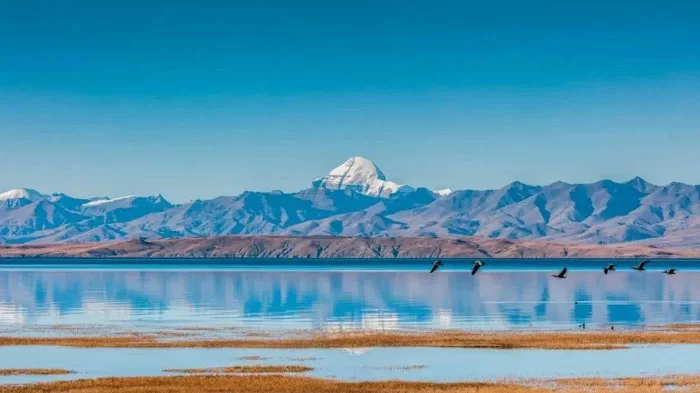
Kailash Sacred Mountain.
Local Cuisine and Accommodation Nearby
As you embark on your journey to the majestic Kailash Sacred Mountain, experiencing the local cuisine and securing comfortable accommodation will enhance your adventure. Nestled amidst breathtaking landscapes, the region offers a variety of culinary delights and hospitable places to stay, ensuring your pilgrimage is both satisfying and restful.
Local Cuisine
Tibetan cuisine is a delightful blend of flavors and nutrition, perfectly suited for the high-altitude environment. Here are some must-try dishes during your stay:
-
Momos: These Tibetan dumplings are a favorite among travelers and locals alike. They come stuffed with a variety of fillings, including spiced vegetables, yak meat, or cheese. Best enjoyed steamed or fried, momos are perfect for a quick snack or a hearty meal.
-
Thukpa: A warming noodle soup that is a staple in Tibetan households. Thukpa is typically made with hand-pulled noodles, fresh vegetables, and can include meat options. It’s a comforting dish, especially after a long day of trekking.
-
Tsampa: This traditional Tibetan staple made from roasted barley flour is often mixed with butter tea or water. It’s not only nutritious but also provides the energy needed for high-altitude hikes. You might find it served in local eateries, sometimes with added spices or sweeteners.
-
Butter Tea: Known as po cha, this creamy tea, mixed with yak butter and salt, is essential to Tibetan hospitality. While its unique taste may be an acquired one, it’s a must-try for an authentic Tibetan experience.
-
Yak Meat: Rich in flavor and a good source of protein, yak meat is often found in various dishes, from stews to grilled skewers. Try it in a local eatery for a true taste of the region.
Accommodation Options
Finding a comfortable place to rest is crucial, especially after long days of trekking. Here are some highly recommended accommodations near Mount Kailash:
-
Darchen Guesthouses: Darchen serves as the gateway to the Mount Kailash Kora. Here you’ll find an array of guesthouses that offer basic amenities with warm hospitality. Many provide shared facilities, hot water, and hearty breakfasts to fuel your day.
-
Kailash Hotel: Located in Darchen, this hotel offers a more comfortable stay with private rooms and stunning views of the surrounding mountains. The restaurant serves delicious local dishes, making it a convenient choice after a long day of trekking.
-
Zhangmu Hotel: Situated near Lake Manasarovar, this hotel is perfect for those looking to combine comfort with majestic views. Offering cozy rooms and Tibetan-style decor, it makes for a serene retreat after your adventures.
-
Tibetan Homestays: For a more immersive experience, consider staying with local families in a homestay setting. This option allows you to engage with Tibetan culture and enjoy home-cooked meals, providing a unique insight into the daily lives of the locals.
-
Camping Options: For the adventurous, there are opportunities to camp along the trekking routes. Many guided tours include camping gear, allowing you to connect with nature under the starry skies of Tibet.
As you savor the local flavors and find rest in the welcoming accommodations surrounding Kailash Sacred Mountain, you’ll create memories that will last a lifetime. Whether indulging in a warm bowl of thukpa or sharing stories with fellow travelers in a guesthouse, each moment enriches your sacred journey.

Kailash Sacred Mountain.
Frequently Asked Questions
Frequently Asked Questions about Kailash Sacred Mountain
1. What documents do I need to travel to Mount Kailash?
To visit Mount Kailash, you’ll need a valid passport (with at least six months’ validity), a Chinese visa, and a Tibet travel permit. Your Tibetan travel agency will assist you in obtaining the necessary permits. Ensure you start this process at least one month prior to your trip.
2. When is the best time to visit Mount Kailash?
The ideal time to visit is from April to mid-October, with the most popular months being May and September. July and August can be rainy, so if you want clearer skies for photography, plan your visit just before or after this season. Also, consider timing your visit with the Saga Dawa festival for a vibrant cultural experience.
3. How do I get to Mount Kailash?
There are several options to reach Mount Kailash:
– Drive from Lhasa via private or group tours.
– Fly from Lhasa to Ali, then drive to Kailash.
– Travel from Nepal by road or take flights to Hilsa, followed by a drive to Kailash.
Choose the method that best suits your schedule and budget.
4. How physically demanding is the trek around Mount Kailash?
The trek, known as kora, is a challenging three-day journey around the mountain, with high altitudes (over 5,600 meters). It’s crucial to be in good physical condition and to acclimatize properly. Gradual acclimatization is built into most tour itineraries to help you adjust to the altitude.
5. What should I pack for the Mount Kailash trek?
Pack layers of clothing to adapt to changing weather conditions, sturdy trekking shoes, a good sleeping bag, and essential gear such as trekking poles, sunglasses, and sunblock. Don’t forget to include any personal medications, as medical help may be limited in the region.
6. Are there food and accommodation options available?
Yes, there are guesthouses and campsites along the trekking route, offering basic meals. However, choices may be limited, so it’s wise to carry some snacks and instant meals. Be prepared for a more rustic experience, as accommodations can vary in comfort.
7. Can I hire support for my trek, such as yaks or porters?
Absolutely! You can hire yaks to carry your gear and porters to assist you during the trek. This can make the journey more manageable, allowing you to focus on the experience rather than the weight of your pack.
8. Is there a specific age limit for trekking around Mount Kailash?
While there is no strict age limit, trekkers should be in good health and physically capable of handling the trek’s challenges. It’s advisable for older individuals or those with health concerns to consult a doctor before embarking on this adventure.
Final Thoughts on Your Trip
As your journey to Mount Kailash comes to a close, take a moment to reflect on the profound experiences this sacred mountain has gifted you. Whether you embarked on the challenging three-day kora, admired the breathtaking Himalayan landscapes, or connected with fellow pilgrims from around the globe, each moment has contributed to a tapestry of memories that will stay with you long after your return home.
In the heart of Tibet, Mount Kailash stands as a symbol of spiritual devotion, cultural richness, and the resilience of nature. It invites you not just to trek its rugged paths, but to immerse yourself in the vibrant tapestry of Tibetan culture and history. From the serene waters of Manasarovar Lake to the bustling energy of the Saga Dawa Festival, every encounter has the potential to deepen your understanding of this extraordinary land.
As you leave this sacred site, carry with you the tranquility and inspiration found among the rugged peaks and ancient traditions. Let the spirit of Kailash accompany you into your everyday life, reminding you of the beauty of adventure, the strength found in challenges, and the connections forged through shared journeys. May your heart remain open to the wonders of the world, and may you always find a path that leads you back to the mountains. Safe travels on your next adventure!